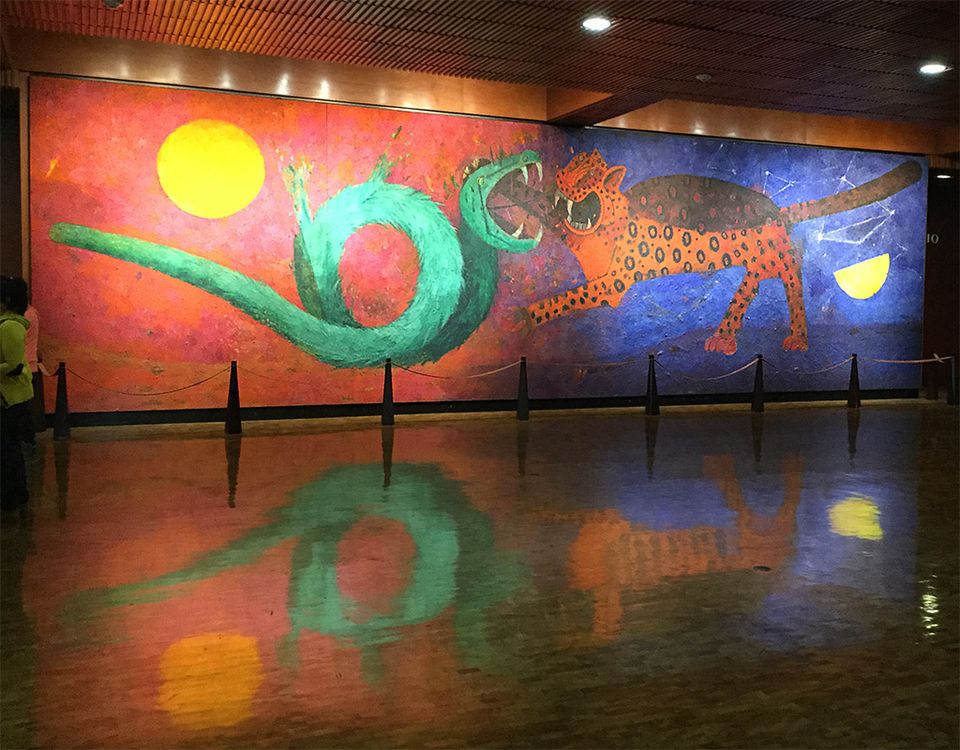

E. Carmen Ramos, curator of Latino Art at SAAM, was recently in Mexico to research her upcoming exhibition on the acclaimed 20th-century Mexican artist Rufino Tamayo's lengthy residence and production in New York City. This is the sixth and final post Carmen scribed from the road. The exhibition Tamayo: The New York Years will open at SAAM November 3, 2017. Read all of Carmen's notes from her research trip.
On our last day in Mexico City we visited the Museo Nacional de Antropología (National Anthropology Museum), which is housed in a spectacular building that features a waterfall cascading down an interior patio. It was delightful to see local and international audiences lining up to visit the museum, a scene that reminded us of the long lines at many Smithsonian museums on the National Mall. We visited the museum to accomplish two things: visit the archives to find evidence of Tamayo's employment there in the early 1920s and see Tamayo's portable mural, Dualidad (Duality), completed in 1964.
Our visit had mixed results. While we did find some documents that clarified the dates of Tamayo's tenure there, we didn't uncover anything earth shattering. When Tamayo was a young artist, he was hired to draw Mesoamerican objects in the collection. His drawings, which we were sadly unable to locate, were distributed to artisans in Mexico in hopes of inspiring their new creations.
Our second goal was easier to meet. Tamayo's mural greets viewers in the museum's grand lobby. Duality did not disappoint. Here Tamayo tackles the drama of Mexico's indigenous past by picturing the epic encounter between two Aztec gods, Quetzalcoatl, the feathered serpent and Tzecatlipoca, the jaguar. The mural pictures a fierce battle between two opposing foes, each baring their vicious fangs. The differences between gods are marked by their corresponding temporalities, day and night. The mural resonates with Tamayo's approach to Mexico's pre-Hispanic heritage; he is deeply bound to indigenous culture, yet his work is never narrative or ethnographic. The mural leaves us more with a feeling —aggression and tension, but also harmony and balance— than history we can recite. It was a fitting and delightful closure to our Mexican research adventure.
Now the joyous task of weaving our Tamayo story together....


















